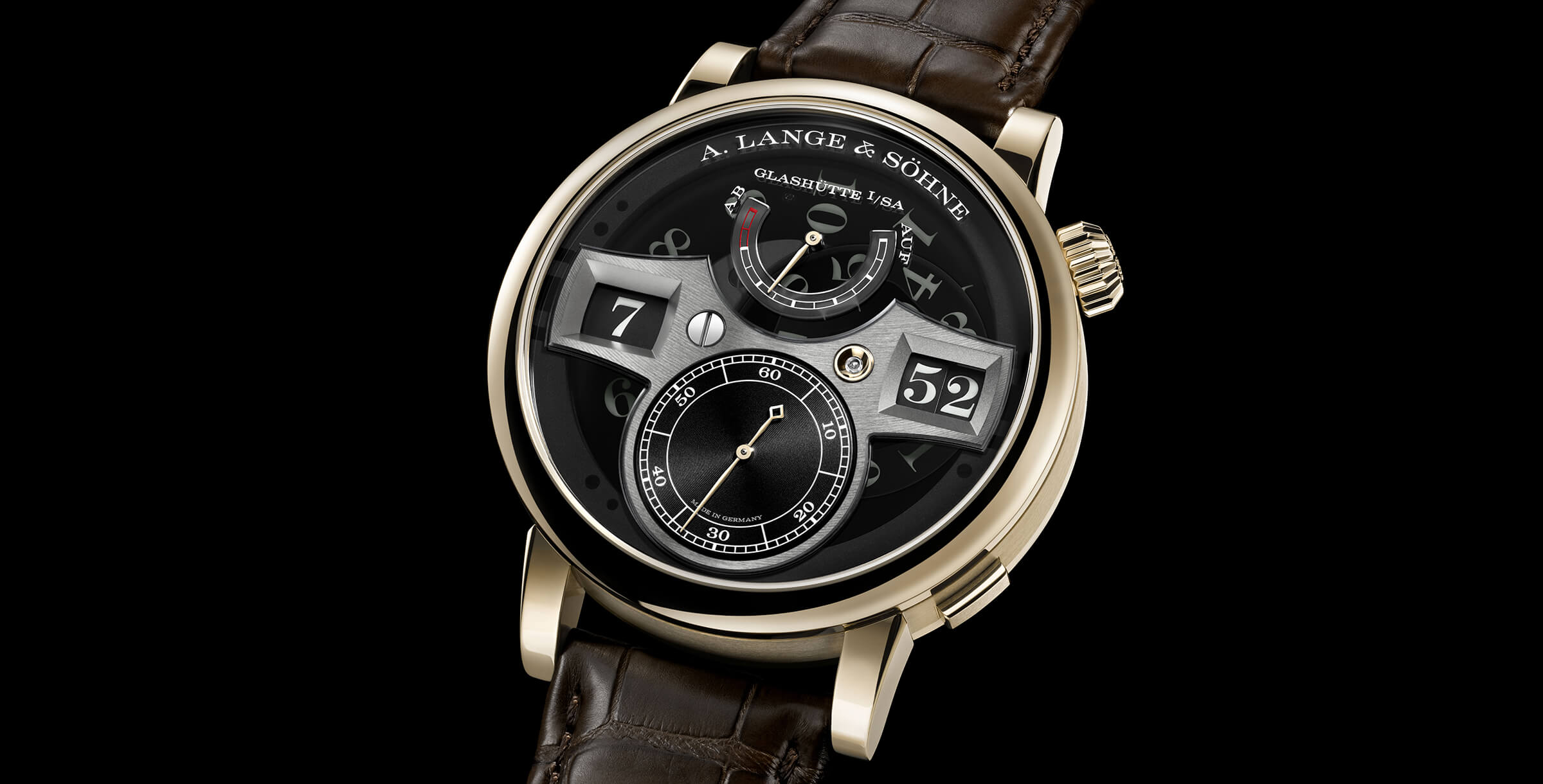High-end German manufacture A. Lange & Söhne has launched a global photography project involving its Saxonia Moon Phase alongside iconic bridges in 16 locations around the world. We accepted the challenge and came up with a double proposition – in Lisbon it had to be done twice, considering the relevance of both the 25 de Abril and Vasco da Gama bridges. (portuguese version/ versão portuguesa ).
—

There was a remarkable sentence highlighted in one of the exhibition rooms at the A. Lange & Söhne booth during the recent Salon International de la Haute Horlogerie: “If you want to see the exact moon phase, look at your wrist not at the sky”. The phrase clearly evokes the relevance that the historical Glashütte-based manufacture awards to moon phase displays on its timepieces – and in the brand’s regular collection can be found ten watches (Tourbograph Perpetual “Pour le Mérite”; Datograph Perpetual Tourbillon; Datograph Perpetual; 1815 Rattrapante Perpetual Calendar; Richard Lange Perpetual Calendar “Terraluna”; Langematik Perpetual; Saxonia Annual Calendar; Grand Lange 1 Moon Phase; Lange 1 Moon Phase; Saxonia Moon Phase) paying tribute to the Earth’s satellite through a celestial disc depicting the lunation with great precision. Of those ten watches, the one with the biggest disc is the Richard Lange Perpetual Calendar “Terraluna” – featuring 2116 stars accompanying the moon on a 26,2mm diameter. But that particular disc is located on the back of the watch and can only be seen through a sapphire glass caseback. Which means that, from all the iterations that include a moon phase display on the dial, the one that presents the most stars by square millimeter is the Saxonia Moon Phase: 852 on a 12,1mm celestial disc including two moons.

The Saxonia Moon Phase was introduced for the first time in January 2016 at last year’s Salon International de la Haute Horlogerie and, in the ensuing summer, Lange & Söhne decided to launch a worldwide photographic initiative (still going on) featuring precisely the watch as the main star; it all started with a photo session against a Saxon backdrop in the moonlight aiming to express a perfect combination of aesthetics and precision – and that portrayal kicked off an international online event that just had a stopover in Lisbon.
It’s quite obvious that the Earth satellite keeps on carrying a significant power of attraction at various levels… even if in modern times disciplines such as astronomy, photography and space travel have given us close-up encounters with the moon. But, despite the latest insights, the popular asteroid has lost none of its ancestral allegorical fascination – and the magical appeal that science supposedly took away from the moon was given back to it by art across the centuries through numerous oeuvres in literature, music, painting and photography.
Artistic imagery and photographic reality
Since its advent, photography always played a relevant role in depicting the moon via faithful portrayals or artistic interpretations. In 1865, pioneer of astrophotography Lewis Morris Rutherfurd created the first detailed image of the moon in his Manhattan observatory; some forty years later, legendary camera artist Edward Steichen created “The Pond – Moonlight”, a milestone in artistic lunar photography that was sold at auction in 2006 for 2.9 million US dollars. The same title would also befit the photo that shows a proud Saxonia Moon Phase in front of the Rakotz Bridge in Saxony’s Rhododendron Park in Kromlau. In the silvery light of the full moon, the bridge and its mirror image on the water’s surface blended to become a perfect circle. A quite magical scenario indeed: every 29.5306 days, the surface of lunar rocks on the moon reflects a fraction of the sunlight that then hits the earth after 1.28 light-seconds, equalling an average distance of 384.400 km.

The Kromlau picture represented the kick-off to a global journey in which watch journalists and bloggers in 16 cities around the world would demonstrate their photographic skills with the Saxonia Moon Phase on a scenario including a moonlit bridge. After the inaugural photo session in Saxony, the watch has visited or will visit locations such as Copenhagen, London, Tokyo, Tours, Sydney, Florence, Hong Kong, New York, Oslo, Amsterdam, Lisbon, Rio de Janeiro, Beijing, UAE and Warsaw – with a picture being taken of the Saxonia Moon Phase alongside a bridge on each of those locations. As one can see by the inaugural photo taken in Kromlau, any smaller bridge does make the task a bit easier with a better picturesque result… and when I got the invitation I immediately thought of a small stone bridge near home in seaside Cascais, but a quick inspection made me realise it would be unfeasible: there wasn’t not only enough space for a portrayal including the watch, the bridge and the moon but also the bridge itself was under repairing and hidden behind scaffolds. With Cascais out of the picture, it had to be done in Lisbon.

Yet, in Lisbon there are two main bridges. Both with huge dimensions, making the task even more problematic. Besides, being winter time means the chances of getting a clear sky allowing the moon to be captured in all its glory were significantly reduced. On top of it, any nocturnal mission would mean I couldn’t do it by myself – I’m not a photographer, I’m just someone who uses an iPhone to take wristshots of watches… and even though smartphone cameras are awfully good these days, they aren’t good enough to come up with a result worth of what my international colleagues had been doing. So I looked for a solution in-house (our Espiral do Tempo magazine) and requested Paulo Pires’ know-how to get the best possible pictures of both bridges. And then we would choose one to submit to Lange & Söhne. We were lucky: after scouting sessions on the previous days and under the menace of inclement weather, we were blessed with a relatively clear sky on full moon night.
Vasco da Gama Bridge

We started off with Vasco da Gama Bridge. Paulo and I walked from the Parque das Nações side in the direction of the bridge inaugurated in 1998 and considered the longest in Europe – a total length of 12.3km, including 0.8km for the main bridge and 11.5km in viaducts. Along our way we shot several pictures (losing a lighting device that fell to the river Tagus in the process) while the moon went up from below to above platform level; we ended up choosing a place that allowed us to keep a relatively global perspective of the bridge and highlight its architectural significance. And also historical: it was baptized as a tribute to the 500th anniversary of the discovery of the sea route to India by Vasco da Gama.

25 of April Bridge
Afterwards we hurried on to the Belém area before the moon would rise too high or the clouds could ruin our mission. On the eve I had been studying several spots riverside and my choice ended up being a place neighbouring the Monument to the Discoveries, so we headed directly there – and did actually get the desired portrayal, an image that includes the Monument to the Discoveries with all its symbolism, the monumental statue of Christ the King on the south bank and, obviously, the insurmountable 25 of April Bridge which, since 1966 and throughout 2,28km, not only became a landmark of the capital but also facilitated the circulation between the centre and south of Portugal.

Of course we also had to take a few pictures of the watch at our Espiral do Tempo studio. Besides fusing precision and aesthetics in an ingenious ensemble, Lange & Söhne got it right by adding a moon phase display to the Teutonic minimalism of the design because the outsize date display in the gold-framed twin aperture visually counterbalances the subsidiary seconds dial that also incorporates the moon aperture of the Saxonia Moon Phase – whose seven-stage transmission was designed with such accuracy that the display only needs to be corrected by one day every 122.6 years. The deep blue hue of the solid-gold lunar disc is the result of a patented coating and its 852 stars are cut out with a laser beam.

The precise moon-phase display and the characteristic Lange outsize date dominate the face of a timepiece focused on optimised technology and aesthetic purity. The gold-framed split double aperture as well as the space-saving configuration with two separate display segments for the units and tens are an iconic brand hallmark first showcased in 1994, when the first four Lange timepieces of the new era (including the Saxonia) were unveiled.

In the Saxonia Moon Phase, the outsize date below the twelve o’clock position is visually counterbalanced by the moon-phase display in the top half of the subsidiary seconds dial at six o’clock. Lange & Söhne has gained considerable experience in the development of precise moon-phase displays and the self-winding calibre L086.5 was at the time of the launch the brand’s 16th movement with the popular astronomical complication.

The display is connected to the hour-wheel continuum, meaning it is always in motion like the moon itself. It reproduces the period from new moon to new moon with an accuracy of 99.998 per cent, thanks to a precisely calculated seven-stage transmission. The generous 72-hour power reserve is achieved by one mainspring barrel and a large central rotor with a centrifugal mass in platinum efficiently delivers the winding power. With a classic screw balance, a free-sprung Lange balance spring, a three-quarter plate made of untreated German silver and a hand-engraved balance cock in a perfectly hand-finished movement, the Saxonia Moon Phase includes most traditional features commonly associated with Lange & Söhne timepieces.

I’ve never hidden my personal preference towards the Zeitwerk range (by the way, we strolled around Lisbon with a Zeitwerk Striking Time in spectacular fashion); besides, the one and only Lange 1 is for sure the German manufacture’s ex-libris as it embodies its own renaissance in 1994, plus there is a wide array of magnificent specialties (from the Datograph to the recently introduced Tourbograph Perpetual Pour le Mérite), but the Saxonia Moon Phase can perfectly hold its place in the catalogue and is a timepiece to be considered by die-hard Lange fans. Featuring a contemporary-sized rose gold or white gold (the one we photographed) 40mm diameter x 9.8mm height case, it can be used to great effect both with a formal attire or a casual elegant outfit. Especially while under the moonlight, of course.

To conclude, here’s a gallery with the pictures of the global project already taken. Click on the picture below to see the portfolio. And aren’t our pictures among the very best? We think so…
[wonderplugin_carousel id=”190″]
—











